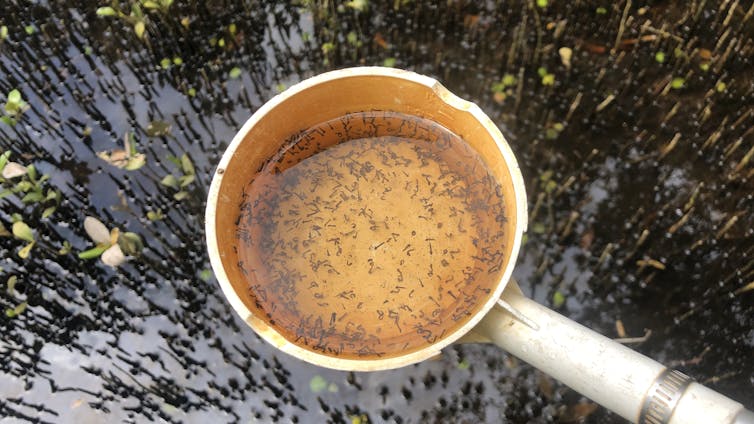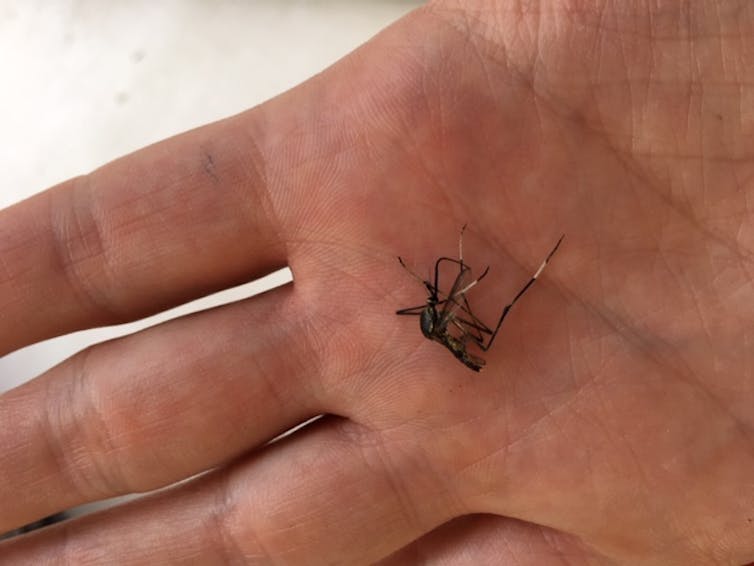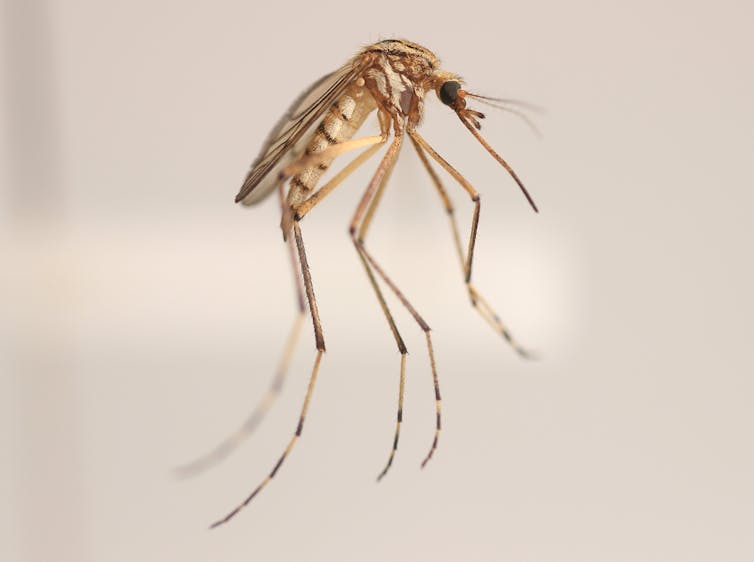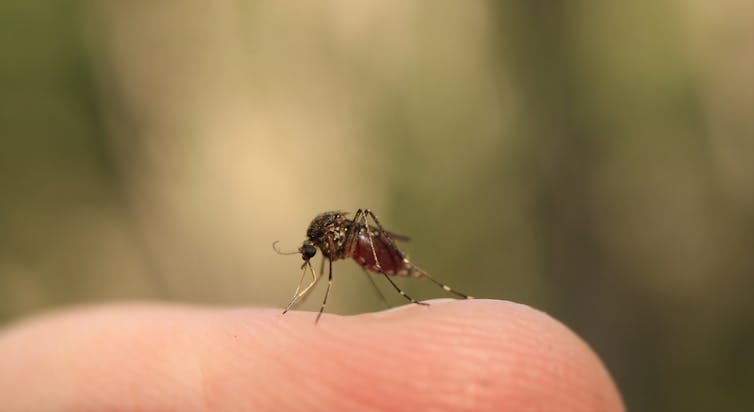
Like all insects, mosquitoes thrive in warmer weather. But what they really need is water. La Niña rainfall and flooding are providing the perfect breeding ground for mosquitoes, with numbers exploding in recent weeks.
People are also seeing giant mosquitoes, tiny mosquitoes, and species they haven’t noticed before. Some of these mosquitoes are around every season but their numbers are booming, thanks to the favourable conditions.
Australia has around 300 species of mosquito. So which do you need to look out for?
First, let’s go over some mozzie basics.
Mozzies live for around 3 weeks
The mosquito life cycle is complex. Eggs are laid on or around water. When immature mosquitoes hatch, they’re completely reliant on being in water.
During the warmer months, it may take as little as a week for an adult mosquito to emerge from the water to start buzzing and biting.
Adult mosquitoes only live for about three weeks.

Only females bite
As well as water and warmth, mosquitoes also need blood. But only female mosquitoes bite, as they need the extra nutritional hit to help develop eggs.
Mosquitoes don’t just bite people. They will bite a wide range of mammals, birds, reptiles and amphibians. They can even bite earthworms, mudskippers (amphibious fish) and maybe even whales.
What are ‘giant’ mosquitoes?
One mosquito in Australia that doesn’t bite at all is Toxorhynchites speciosus, a “giant” mosquito, common in eastern Australia.

The mosquito is predatory: their “wrigglers” often eat those of other pest mosquitoes. Closely related mosquitoes have even been used for mosquito control in other counties.
But it isn’t these “friendly” mosquitoes causing all the problems after flooding.
Other mosquitoes, commonly known as “floodwater mosquitoes”, can bite and are found in large swarms following flooding. They’re a serious nuisance. Examples of these mosquitoes include Aedes sagax, Aedes vittiger, and Aedes aculeatus. They often disappear as quickly as they appear.

Mosquito surveillance programs, such as the NSW Arbovirus Surveillance and Mosquito Monitoring Program, are picking up these mosquitoes (and lots of smaller species) already this season. Perhaps the most famous of them all is the large, sandy-coloured mosquito Aedes alternans. Commonly known as the Hexham Grey, this mosquito has had poems written about it and there is even a “big mozzie” in Hexham, NSW.
Which mosquitoes make us sick?
Despite the diversity of mosquitoes in Australia, only a few pose a serious public health threat.
Aedes notoscriptus mosquitoes have given up their natural habitat and adapted to life in water-filled containers around our homes. They’ve proven to nuisance-biting pests as well as transmitting viruses that make us sick.
In coastal regions of Australia, Aedes vigilax (commonly known as the saltmarsh mosquito) and Aedes camptorhynchus (commonly known as the southern saltmarsh mosquito) are found in estuarine wetlands. These include mangrove and saltmarsh habitats where water is often brought in with “king tides”. The mosquitoes tolerate the salty conditions. These mosquitoes can emerge in huge numbers in summer, are aggressive biters, and can fly many kilometres from wetlands. They are also the mosquito most likely to be causing outbreaks of mosquito-borne disease in coastal regions due to their ability to spread Ross River virus.

There are a number of pest mosquitoes found in freshwater wetlands. The biggest pest is Culex annulirostris (commonly known as the banded freshwater mosquito). This mosquito is found in a range of habitats, from wetlands to stagnant puddles. The banded freshwater mosquito is probably the most important species when it comes to spreading pathogens such as Ross River virus, Murray Valley encephalitis virus, and Japanese encephalitis virus.
Read more: How to mozzie-proof your property after a flood and cut your risk of mosquito-borne disease
How can we beat their bites?
After three years of above average rainfall, and recently flooding, most of eastern Australia is just one giant mosquito habitat. While some efforts to use insecticides to control mosquitoes may be effective, the reality is the task of adequately controlling mosquito numbers is insurmountable.
There are some steps you can take to protect yourself and family from mosquito bites. When outdoors, wear a loose-fitting long sleeved shirt, long pants, and covered shoes. You can even treat your clothing with chemicals such as permethrin or transfluthrin.
Insect repellents also provide protection. Products that contain deet, picaridin, or lemon eucalyptus oil will provide the longest-lasting protection but ensure you cover all exposed areas of skin.
Mosquito coils and other products may help when paired with repellents.
Now the bad news. The floods may pass quickly but the water is going to remain in pools and puddles across much of eastern Australia for most of the summer. That is great news for mosquitoes but not so good for those of us already nursing arms and legs full of itchy red mosquito bites.
Cameron Webb and the Department of Medical Entomology, NSW Health Pathology, have been engaged by a wide range of insect repellent and insecticide manufacturers to provide testing of products and provide expert advice on mosquito biology. Cameron has also received funding from local, state and federal agencies to undertake research into mosquito-borne disease surveillance and management.
This article was originally published on The Conversation. Read the original article.







